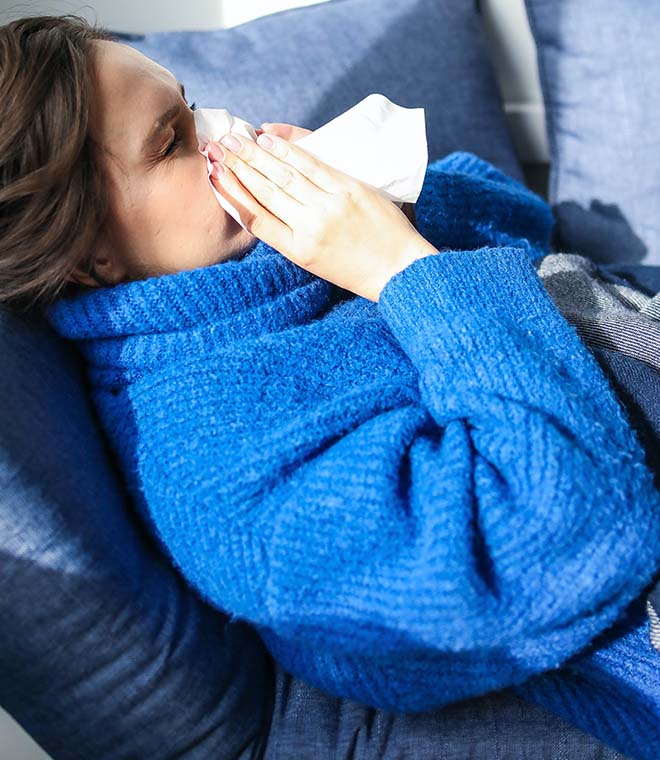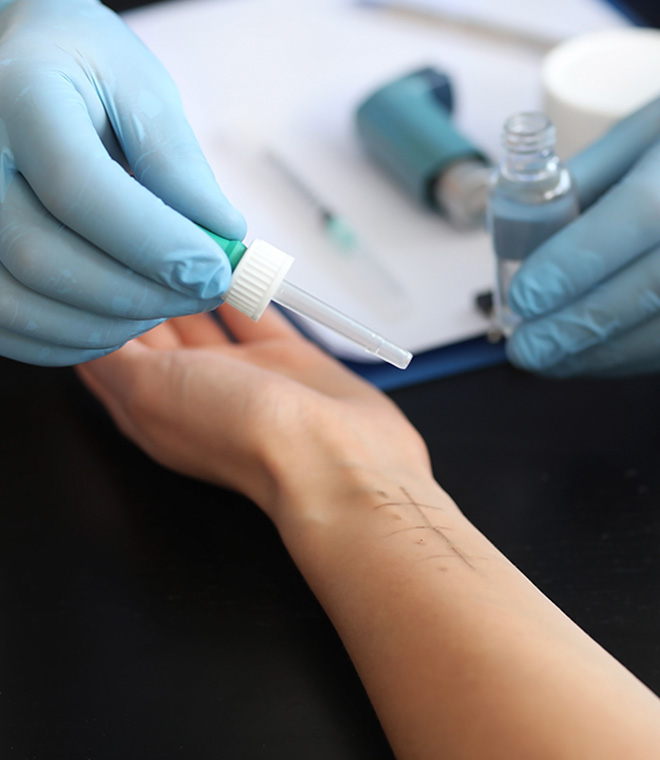Health
Allergy testing for babies and children
By Jenilee Matz, MPH Mar 25, 2022 • 7 min
About 6 million children in the U.S. have food allergies.
A food allergy is a condition that causes your child’s immune system to react to harmless proteins found in foods as if they were a dangerous virus, bacteria or other infectious agent. The reaction usually happens shortly after a food is eaten and can range from mild rashes to more serious complications.
Children most often have allergies to peanuts and cow's milk. Other common allergens include eggs, soy, tree nuts (such as almonds, walnuts, pistachios, pecans and cashews), wheat, fish and shellfish (such as shrimp and lobster). Children can have symptoms when they're exposed to or eat the allergen. Breastfed infants and young children can even have allergic reactions to foods their mothers eat. Here we'll discuss signs of food allergies and how they're diagnosed in babies and children.
Signs of food allergies
Food allergies can cause symptoms, including:
- Skin problems, such as hives, itchy rashes or swelling
- Digestive issues, such as upset stomach, nausea, vomiting or diarrhea
- Respiratory problems, such as trouble breathing, wheezing, sneezing or throat tightness
- Circulatory issues, such as lightheadedness, pale skin or loss of consciousness
If your child has signs of a food allergy, see their healthcare provider. They may refer you to an allergist.
When several systems of the body are affected, the reaction may be severe or even life-threatening. This type of allergic reaction is called anaphylaxis and requires immediate medical attention.
Food allergy testing
Kids' allergy testing is similar to allergy testing in adults. Your child's allergist will ask you about your child's and your family’s health history and allergy symptoms. They'll likely want to know the following:
- The food you believe your child may be allergic to
- How much of the food they ate before they had a reaction
- Whether the reaction occurs every time your child eats the food
- The specific symptoms they experienced
- How long it took for symptoms to start after eating the food
- How long symptoms lasted
Your child's allergist will decide if your child needs allergy testing and which tests to perform.
Skin allergy tests
For a skin allergy test, your child will have a small amount of liquid food extract placed onto the skin of their back or forearm. They'll receive one drop for each food they're being tested for. Next, the healthcare provider will use a needle to gently prick the areas of skin that have the liquid. This lets a small amount of the liquid food extract to get beneath their skin. If a small, red and raised bump appears 15–20 minutes later, it probably means your child is allergic to that food.
Allergy blood tests
In allergies, the immune system overreacts to an allergen and produces immunoglobulin E (IgE) antibodies. Food allergy blood tests measure the amount of IgE antibodies that develop in your child's blood after eating certain foods. For this test, a healthcare provider will take a small sample of blood from a vein in your child's arm. If the blood test is positive for IgE antibodies to a specific food, your child is likely allergic to that food.
Oral food challenge tests
Positive results on skin tests or blood tests often mean your child has an allergy to the food tested, but results aren't always conclusive. In these cases, your child's allergist may recommend an oral food challenge test to confirm their results. The challenge involves eating or drinking a small amount of the food in increasing amounts over time to see if your child has a reaction. The test is done in a doctor's office or hospital under a healthcare provider's supervision. This way, your child can receive immediate treatment if they have an allergic reaction. Oral food challenges may also be done to figure out if a child has outgrown a food allergy.
Elimination diet
To narrow the search for foods causing allergies, your child's allergist may suggest trying an elimination diet if they have mild symptoms. This involves removing all suspect foods from their diet for one to two weeks, reintroducing them one at a time and noting their symptoms. If they react to a specific food, your child may be allergic to that food. If your child is breastfed, you may need to do an elimination diet and note your child's symptoms when you remove foods from your diet and reintroduce them.
Know that food allergies can only be diagnosed by a qualified healthcare provider. While there are several at-home allergy tests available that measure IgG antibodies to foods (not IgE), according to the American College of Allergy, Asthma and Immunology, these at-home allergy tests aren't useful or effective.
Is there a gluten allergy test?
Gluten is a protein naturally found in wheat, barley and rye. It can also be found in other products, like medicines, vitamins and supplements. "Gluten allergy" is actually an incorrect term. It's often misused to describe gluten-related conditions, such as an allergy to wheat, a sensitivity to gluten or celiac disease (an autoimmune disorder where the intestinal lining can't absorb gluten and is harmed by foods that contain it). Testing for wheat allergies is the same as testing for other food allergies. To see if your child has a gluten sensitivity, their healthcare provider may suggest trying an elimination diet. For celiac disease testing, your child may need a blood test and a biopsy of their small intestine.
Non-food-related allergy testing
Note that children can be allergic to other things besides food. Testing for other allergens, such as pollen and mold, may be done using a blood or skin test, or with a patch test. A patch test will show if a substance, such as latex, fragrances or medications, is causing contact dermatitis or allergic skin irritation. For this test, a suspected allergen is placed onto a patch, and then the patch is placed onto your child's skin. They'll wear the patch for about 48 hours, and then their provider removes it. Irritation at the site of the patch can indicate an allergy.
Allergy testing cost
Blood tests tend to cost more than other allergy tests. In general, skin tests combined with a physical exam and information about your child's symptoms is the most cost-effective way to diagnose food allergies. To learn how much allergy testing costs, contact your health insurance provider and allergist.
If your child is diagnosed with an allergy, take heart in knowing that your child's symptoms can be managed. Work with your child's allergist to learn how to avoid their allergens and what to do if your child has an allergic reaction. Also, about 80% to 90% of egg, milk, wheat and soy allergies resolve by age 5. Your child’s allergist can perform tests to monitor their allergies and watch to see if they are going away.
Clinically reviewed and updated March 2022.
Sources:
1. https://acaai.org/allergies/testing-diagnosis/food-allergy-testing-and-diagnosis/
2. https://medlineplus.gov/lab-tests/food-allergy-testing/
5. https://acaai.org/allergies/allergies-101/who-gets-allergies/children/
6. https://www.aaaai.org/Tools-for-the-Public/Conditions-Library/Allergies/all-about-allergy-testing
7. https://medlineplus.gov/glutensensitivity.html
8. https://celiac.org/about-celiac-disease/screening-and-diagnosis/screening/
9. https://celiac.org/about-celiac-disease/screening-and-diagnosis/diagnosis/
10. https://www.mayoclinic.org/tests-procedures/allergy-tests/about/pac-20392895



